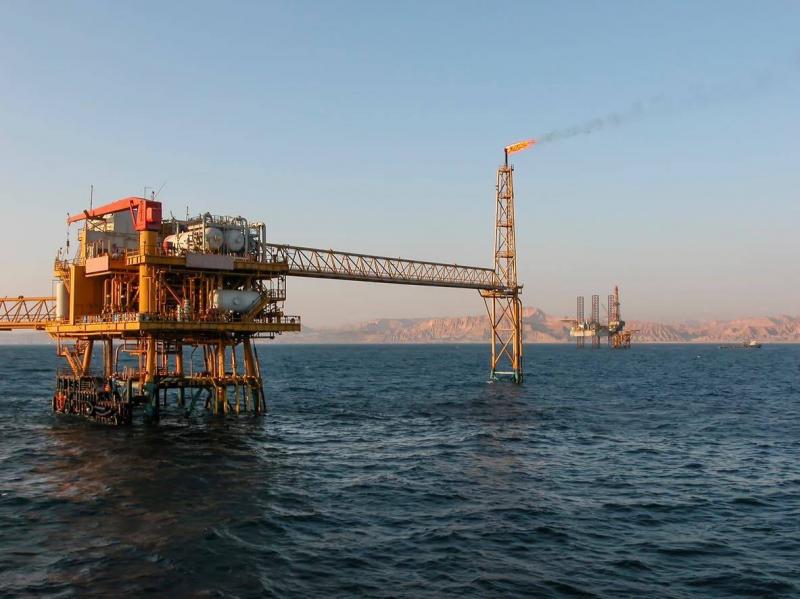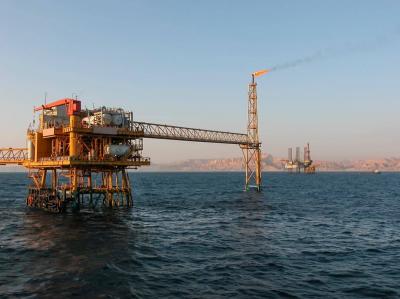Egypt has set an ambitious plan to become a regional hub for gas trade and contribute to securing the needs of global markets, especially with the increasing demand for liquefied natural gas (LNG) in European markets, following its success in achieving self-sufficiency in this resource. The country boasts infrastructure in the form of networks, liquefaction plants, and ports that qualify it for this critical role. This effort is complemented by a national strategy aimed at attracting foreign investments in oil and gas exploration and the intensification of global bidding processes and agreement signing. Additionally, the establishment of the East Mediterranean Gas Forum has been a pivotal point in Egypt’s endeavors to enhance its production and export capabilities, positioning it as a key player in the global gas market.
In this context, the Cabinet Media Center published a report highlighting Egypt's efforts to enter the ranks of the largest suppliers of LNG to major gas-consuming markets after achieving self-sufficiency. The report revealed that Egypt ranked 14th globally, 5th regionally, and 2nd in Africa in gas production in 2020, with an annual production volume of 58.5 billion cubic meters, according to British Petroleum (BP).
The report added that Egypt maintained its levels of natural gas production and export despite the COVID-19 crisis and its repercussions. In the 2020/2021 fiscal year, production reached 66.2 billion cubic meters, consumption was 62.9 billion cubic meters, leading to a surplus of 3.3 billion cubic meters. Meanwhile, production recorded 63.2 billion cubic meters in 2019/2020, with consumption at 59.6 billion cubic meters and a surplus of 3.5 billion cubic meters.
The report indicated that Egypt achieved self-sufficiency in September 2018, thus returning to the global map of natural gas and LNG exports, with production in the 2018/2019 year recorded at 66.1 billion cubic meters, consumption at 61.8 billion cubic meters, and a surplus of 4.3 billion cubic meters. It pointed out that Egypt had turned into a natural gas importer since the 2014/2015 period, where the deficit reached 0.2 billion cubic meters, with production at 46.8 billion cubic meters and consumption at 47 billion cubic meters. The deficit was reported at 7.1 billion cubic meters in 2015/2016, with production at 41.6 billion cubic meters and consumption at 48.8 billion cubic meters. In 2016/2017, the deficit amounted to 8.9 billion cubic meters, with production at 46.3 billion cubic meters and consumption at 55.2 billion cubic meters.
The report noted that the deficit declined with the commencement of operations at the "Zohr" field, recording 4.9 billion cubic meters in 2017/2018, with production at 54.6 billion cubic meters and consumption at 59.5 billion cubic meters. On another note, it reported that natural gas production in 2013/2014 was 52.2 billion cubic meters with a consumption of 50 billion cubic meters, yielding a surplus of 2.2 billion cubic meters. In the previous fiscal year of 2012/2013, production was 58.8 billion cubic meters, consumption was 52.1 billion cubic meters, yielding a surplus of 6.7 billion cubic meters. The production for 2011/2012 was 61.3 billion cubic meters, with consumption at 51.8 billion cubic meters, resulting in a surplus of 9.5 billion cubic meters.
Additionally, the report reviewed Egypt’s international efforts to position itself on the global natural gas trade map. It stated that 99 new offshore petroleum agreements had been signed with international companies for oil and gas exploration with a minimum investment of around 17 billion dollars. It also reported signing grants estimated at approximately 1.1 billion dollars for drilling 384 wells between July 2014 and June 2021, after a hiatus in signing agreements from 2010 until October 2013.
The report addressed the features of maritime boundary demarcation to expand the exploration of natural gas fields, noting that an agreement was signed with Cyprus in September 2014, and another with Saudi Arabia in April 2016, allowing exploration activities in this promising virgin area for the first time. An agreement was also signed with Greece in August 2020.
Regarding the establishment of the East Mediterranean Gas Forum, the report clarified that Egypt initiated the idea during a summit in Crete between the leaders of Egypt, Cyprus, and Greece in October 2018. The forum's charter was signed in September 2020 and became operational in March 2021, thus establishing itself as an international governmental organization. The founding member states are Egypt, Greece, Cyprus, Palestine, Israel, Jordan, and Italy, with France joining later. The United States, the European Union, and the World Bank joined as observers, indicating that the organization serves as a framework for regional cooperation and integration to exploit the gas resources abundant in the East Mediterranean region for optimal benefit.
The report highlighted the mechanisms that aided Egypt in transitioning from a gas-importing nation to an exporter of LNG to various global markets, attributed to intensified gas field exploration and development efforts. Since July 2014, 30 gas field development projects have been implemented, with total investments of about 514 billion Egyptian pounds. Currently, Egypt's natural gas production capacity annually, thanks to gas field development projects, amounts to 73.4 billion cubic meters. Major projects include the development of the Zohr field, with an annual production capacity of 28 billion cubic meters, the Raven field with 8.7 billion cubic meters, and the Nour field with an annual capacity of 4.6 billion cubic meters.
Furthermore, the increase in Egypt's liquefaction capacity, with the Edko and Damietta liquefaction plants reaching a total of 12 million tons annually, has also contributed to this transformation. Damietta plant resumed exports after an 8-year halt, with Egypt exporting its first LNG shipment from the plant in March 2021, consequently increasing LNG exports by 123.3%, from 3 million tons in 2013 to 6.7 million tons in 2021.
The report also mentioned that new markets for Egyptian LNG have opened, with 20 countries importing Egyptian LNG since the resumption of exports, including four new markets in Turkey, Croatia, Pakistan, and Bangladesh.
It illustrated the map of Egypt's gas exports to the major global markets over the past three years, indicating that natural gas is exported to Jordan, while LNG is sent to Japan, Singapore, France, India, Pakistan, China, Turkey, Greece, Italy, Kuwait, Bangladesh, the United Kingdom, Spain, Taiwan, South Korea, Belgium, Panama, the UAE, Thailand, and Croatia.
Additionally, a joint re-export project from Cyprus to Egypt is underway, with a planned pipeline from Cyprus to the Edko liquefaction plant measuring 380 km. The report noted that 8 countries could benefit from the export of Egyptian gas to Europe, and procedures are currently being finalized to resume natural gas exports to Lebanon.
The report captured the international perspective on Egypt's role as a regional gas trading player, highlighting that the Arab Oil Exporting Countries Organization expects Egypt to enhance its LNG exports, given the reactivation of the Damietta liquefaction terminal after an 8-year hiatus. It also noted that the rise in global LNG prices has contributed to the resumption of exports from the Edko plant, which successfully sent several shipments to European and Asian markets, capitalizing on favorable market conditions.
Fitch indicated that Egypt returned to its status as an exporter in 2019, after being an LNG importer, anticipating that 2022 would be a peak year for natural gas production in Egypt. According to the report, Bloomberg affirmed that Egyptian LNG exports would boom, thanks to the reopening of the Damietta gas liquefaction facility, which will help Egypt become a hub for exporting to Europe. The Economist confirmed that Egypt stands as one of the few global LNG exporters whose sales volume increased in 2021.
Standard & Poor's pointed out that the resumption of operations at the Damietta gas plant provided an additional output channel for Egyptian gas exports, where Egypt aims to maximize the surplus gas achieved recently due to new discoveries. The report stated that according to the International Energy Agency, Egypt ranks as the second-largest contributor to the growth of global LNG exports from January to August 2021 and recorded an increase in LNG exports with the return of operations at the Damietta facility.
Furthermore, the foundation for the monitor indicated that the reactivation of the Damietta liquefaction plant for the first time in 8 years, along with the exports from Edko, is a step towards transforming Egypt into a regional gas trading hub targeting Asia and Europe.
Reuters noted that the rapid growth in natural gas supplies, backed by the discovery of the region's largest field, has turned Egypt from an importer to a natural gas exporter, with hopes to become a link for energy trade between the Middle East, Africa, and Europe.
The report finally highlighted the Middle East Institute's assertion that Egypt is currently the fastest-growing Arab LNG exporter and will become a key player and a prominent competitor in the global LNG market. In addition, it revealed that Europe is the leading market consuming natural gas, accounting for 14.2% of global gas consumption, totaling 541.1 billion cubic meters in 2020.
According to the Arab Oil Exporting Countries Organization, the sharp decline in European natural gas production from 2019 to 2050 will increase the European market's reliance on imported natural gas to meet future demand. The report outlined annual natural gas production (in billion cubic meters) from several countries based on British Petroleum data, recording 914.6 in the United States, 638.5 in Russia, 250.8 in Iran, 194 in China, 171.3 in Qatar, 165.2 in Canada, 142.5 in Australia, 112.1 in Saudi Arabia, 111.5 in Norway, 81.5 in Algeria, 73.2 in Malaysia, 63.2 in Indonesia, and 59 in Turkmenistan.




